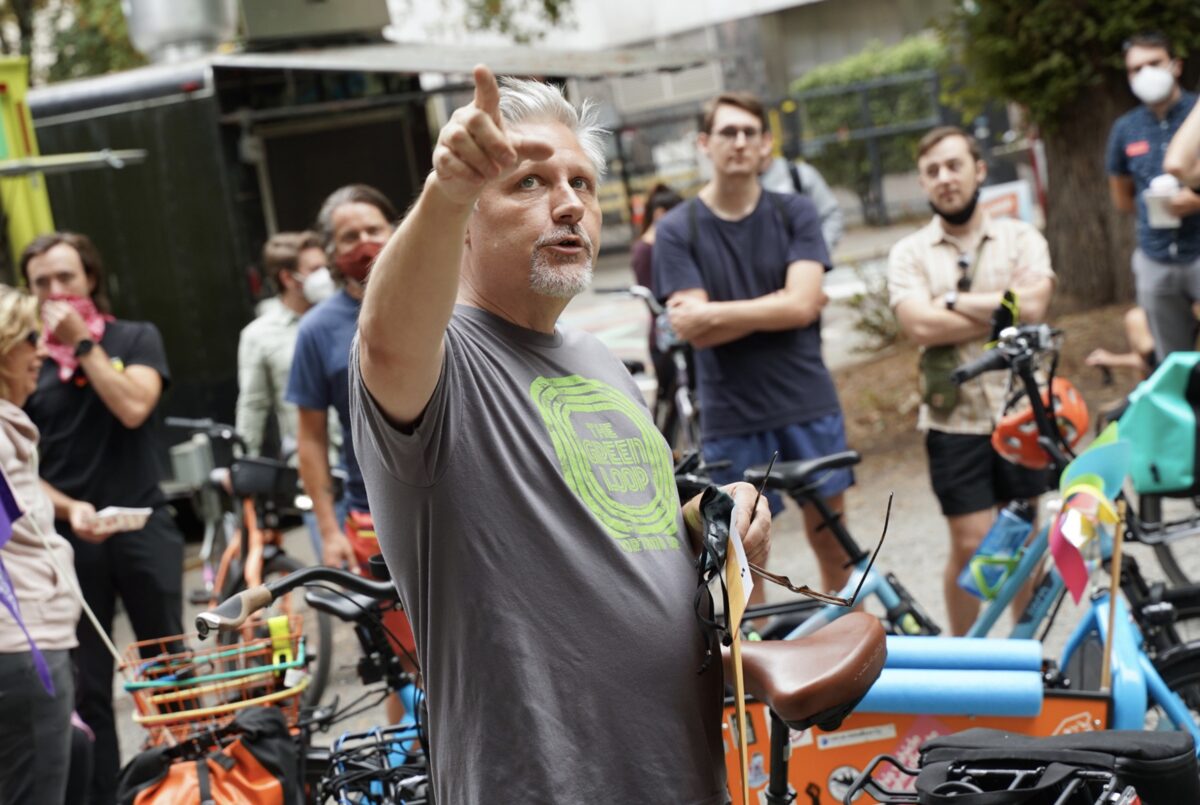
(Photos: Jonathan Maus/BikePortland)
Please welcome new contributor Steve Cheseborough. Steve is a professional blues musician, author, former newspaper editor, volunteer Meals on Wheels deliverer (by bicycle) and writer who lives in Portland. This is his first piece for BikePortland.
———
Is it just a new downtown food cart pod? Or the beginning of a new era in Portland transportation? Keith Jones definitely sees it as the latter.
Jones, executive director of Friends of Green Loop, proudly showed off the Cart Blocks on a Pedalpalooza bike ride last month that started with lunch at the pod. The Cart Blocks opened recently on the site of long-abandoned Ankeny Square, just south of West Burnside between Park and Eighth avenues, at the south tip of the North Park Blocks. The carts were displaced by the 2019 closure of the Alder Street Food Carts to make way for a Ritz-Carlton hotel.
Besides letting the cart owners go back into business and bringing life to an abandoned downtown space, the pod is generating income to continue the restoration of the square, including eventually reopening its old brick bathrooms.
“This would be a great win for Portland. Portland has a great history of transportation successes but we haven’t had one in a while.”
— Keith Jones
And it is one piece of reality, something to actually see, in a huge project that so far doesn’t even exist on paper. “It’s a route, a bunch of ideas,” Jones says. “We want a master plan. There are no specifics yet.” There also is no budget (Jones works as a volunteer), although individual pieces of the route have gotten city funding.
After lunch, the ride (co-hosted by Friends of Green Loop, Portland Bureau of Transportation, and Bike Loud PDX) proceeded along the full six miles of what might someday be the Green Loop — a “linear park” allowing carfree travel through the central parts of all six city quadrants.
The concept was hatched in 2014 by the city’s Bureau of Planning & Sustainability, and gained attention as the main subject of 2017 Design Week Portland. It has drawn opposition from a coalition that proposed it’s own version and said basic safe infrastructure in east Portland should take priority over a fancy new scheme for the central city. It also has been attacked more recently by the Downtown Neighborhood Association, alleging that the Green Loop would remove old trees from the South Park Blocks.
Jones says the tree-removal accusation is false (and Portland City Council agreed, passing the South Park Blocks Master Plan and Green Loop alignment by unanimous vote in July). As for the neglect of east Portland, he stresses that this is one of many plans to improve Portland, and that all can happen. “This is an ‘and,’ not a ‘but,’” he says. “This would be a great win for Portland. Portland has a great history of transportation successes but we haven’t had one in a while.” Jones envisions the Green Loop as one of a “series of concentric circles” of carfree transportation around Portland — the Esplanade and Waterfront Park Trail make a circle with the Tillikum and Steel bridges; the Green Loop goes around that; then there is room for two more between that and the 40-Mile Loop, conceived by the Olmstead Brothers in 1903 as part of Forest Park development. That loop’s concept has been expanded over the decades to include the Columbia Slough, Kelley Point Park and the Springwater Corridor (and much more than 40 miles), but it remains incomplete.
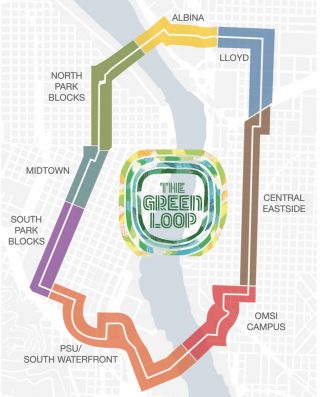
Advertisement
Compared with the long history of the 40-Mile Loop, Jones doesn’t think the Green Loop is moving so slowly. The Tilikum Crossing and the soon-to-open Earl Blumenauer carfree bridge over I-84 near Lloyd Center are already in place, as is the Cart Blocks pod, which Jones worked on for three years.
Moving south from the Cart Blocks is a short but bike-unfriendly ride to O’Bryant Square, another small park that is now closed and surrounded by chain link fences. Jones wants to take down those fences and better connect it to the Cart Blocks on Ankeny, then create the third phase from O’Bryant to Director Park. “This will re-create the continuity between the South and North Park Blocks, which was severed a couple hundred years ago,” he said. A traffic light at Park and Burnside, to make it easier to cross a notoriously dangerous part of Burnside north of the Cart Blocks, is also planned but not funded.
From downtown, the Green Loop passes through Portland State University and through South Waterfront, which already has a bike path on Southwest Moody Avenue, and over the Tilikum to OMSI, which has great potential: “We want to drop the Green Loop into that area that is already an active transportation node like no other. It has the Esplanade, Green Loop, streetcar, MAX and buses on Tilikum, and the Frog Ferry [a planned passenger ferry on the Willamette River].” But he admits that the OMSI area is challenging because of a railroad line running through it. And because people are too used to driving there and parking in its massive lots. But if and when OMSI builds out their master plan, a lot of that could change.
Moving north from OMSI the Green Loop runs through the Central Eastside, an industrial area that presents another big challenge — its businesses ship and receive freight by trucks, which seems incompatible with a cycling and walking route. Jones says the truck traffic can in some cases be relocated around the block, or restricted to certain times. Such a deal was already made in the Cart Blocks, where AT&T agreed to have deliveries in the early mornings rather than throughout the day. Another possibility would be to allow trucks on one lane of a street while bicycle riders and pedestrians are in another protected lane. The Green Loop’s original concept was for a carfree path, but Jones admits it already has been modified to be “as carfree as possible.”
Advertisement
Milagro Theater (525 SE Stark St.) is a bright spot of the Green Loop as it passes through the Central Eastside industrial area. The theater company has created a street mural, one of several already on the Green Loop path. Jones hopes to see many more murals, so that when stitched together they serve as visual markers for a linear park that will lack trees or other vegetation along much of its route. Milagro also has created an outdoor performance area on the Green Loop. Jones celebrates this not just for the joy the arts bring to the loop, but as an example of the partnerships with community groups he sees as crucial to the project.
“We can use bikes on the Green Loop as a network to deliver freight. The hub could be near OMSI.”
— Keith Jones
Heading north through the Lloyd and Albina districts, the Green Loop goes through the Moda Center and Convention Center, enterprises Jones would like to work with but hasn’t yet. Moda Center in a sense is already the kind of space the Green Loop is trying to create, a carfree cluster of shops, pubs, restaurants and entertainment. The trouble is, the space is virtually dead except during home games. And many of the people who attend the games get there by car. The Convention Center area also has potential for car-freedom, “People staying here for conventions usually use Uber. They could be using bikes or scooters instead,” Jones said.
Jones admires Right 2 Dream Too, a city-sponsored safe camp near Moda Center, and would like to see similar areas along the Green Loop. Jones says he’s committed to not displace unhoused people camping around the Green Loop’s path.
In the Albina area the Green Loop will defer to “whatever Albina Vision wants,” Jones says, in reference to the nonprofit Albina Vision Trust, a group that’s steeped in the highly contested Oregon Department of Transportation project to expand Interstate 5. That project has already had a big impact on the Green Loop. The newly adopted Hybrid 3 freeway cover plan axed the proposed carfree Clackamas Crossing Bridge that would have connected NE Clackamas on the west side to the Winning Way/Wheeler Ave intersection on the east side. The new plan for the Green Loop route is a bi-directional bike lane on the south side of Weidler Avenue.
Crossing the river via the Broadway Bridge, the Green Loop gets to the former US Post Office, a 14-acre site in Northwest that is now city-owned and should become an important part of the loop if its development plan ever gets back on track. From there the loop connects to the North Park Blocks, completing the circle.
For Jones, a completed Green Loop would likely be something he’d use quite a bit. Jones has gone carless since moving to Portland from Detroit in 2010 “with three cars just for myself. By 2018 I got rid of the last one.” Now he has two bikes, both non-motorized. Jones hopes eventually there’s a salary for him as executive director. But clearly he believes in the project, no matter how long it takes, and celebrates each small piece of it. “Any big project takes a long time to do,” he said. “But there are quick and dirty ways to get it on the ground — with paint.”
He also sees the Green Loop’s benefits beyond helping people get around. ”It also has freight implications. We can use bikes on the Green Loop as a network to deliver freight. The hub could be near OMSI. We could reduce diesel emissions from local trucking.” He also wants to establish a bike delivery pick-up/drop-off zone on Burnside at the Ankeny Cart Blocks.
His head brimming with ideas, Jones envisions installing food-waste digesters near the food carts. “It looks like a shipping container. And it generates three things: electricity; biogas that replaces propane or natural gas; and plant food.” The electricity and biogas fuel the food carts, and the plant food is hauled by cargo bike to the farmers at the farmer’s market. The bikes return with produce for the food carts.
Jones may be the Green Loop’s biggest booster at the moment, but he wants help. Financial donations are important, especially corporate support, which has been absent thus far. Advocacy matters too: “Testify at meetings, let the city commissioners know you like the idea.”
If the Green Loop is ever to go from lots of likes to lots of bikes, it’ll take a lot more Keith Jones’ pushing for it.
— Steve Cheseborough, chezztone@gmail.com
— Get our headlines delivered to your inbox.
— Support this independent community media outlet with a one-time contribution or monthly subscription.


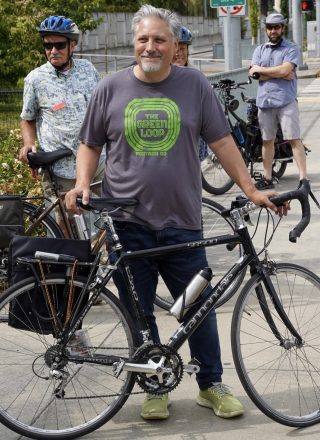
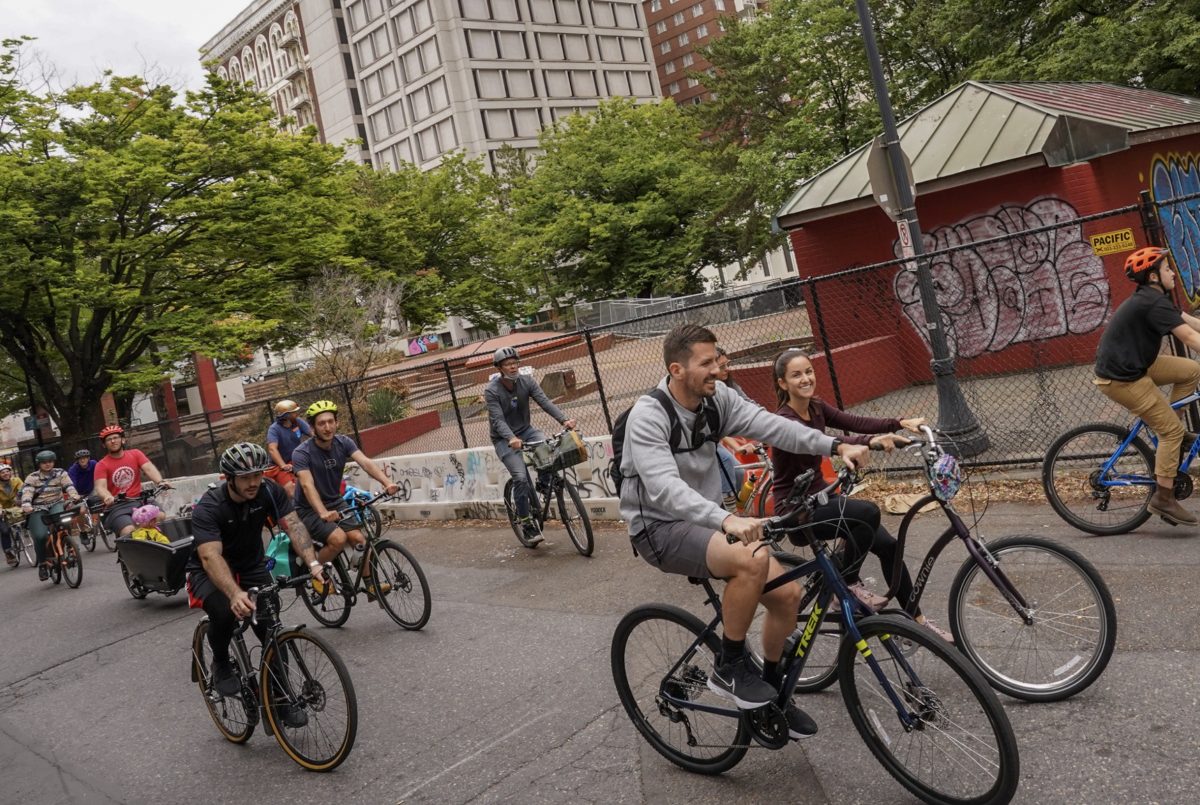
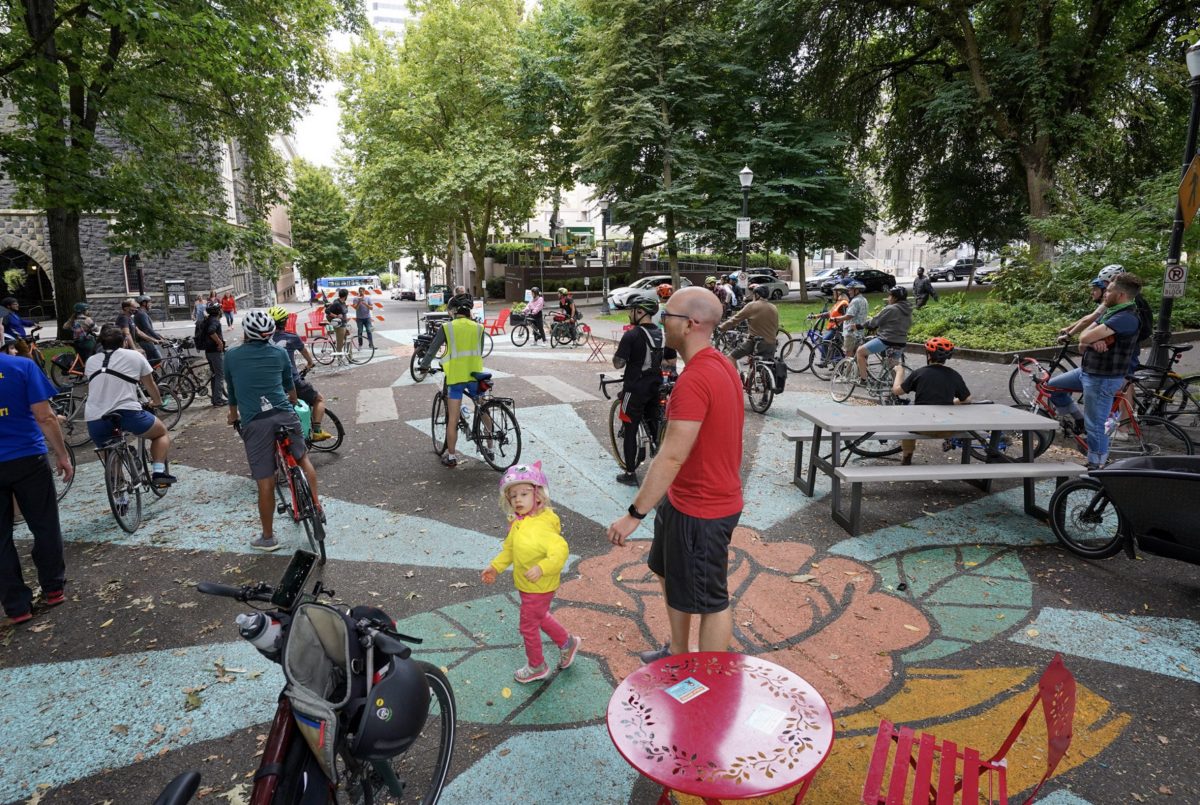
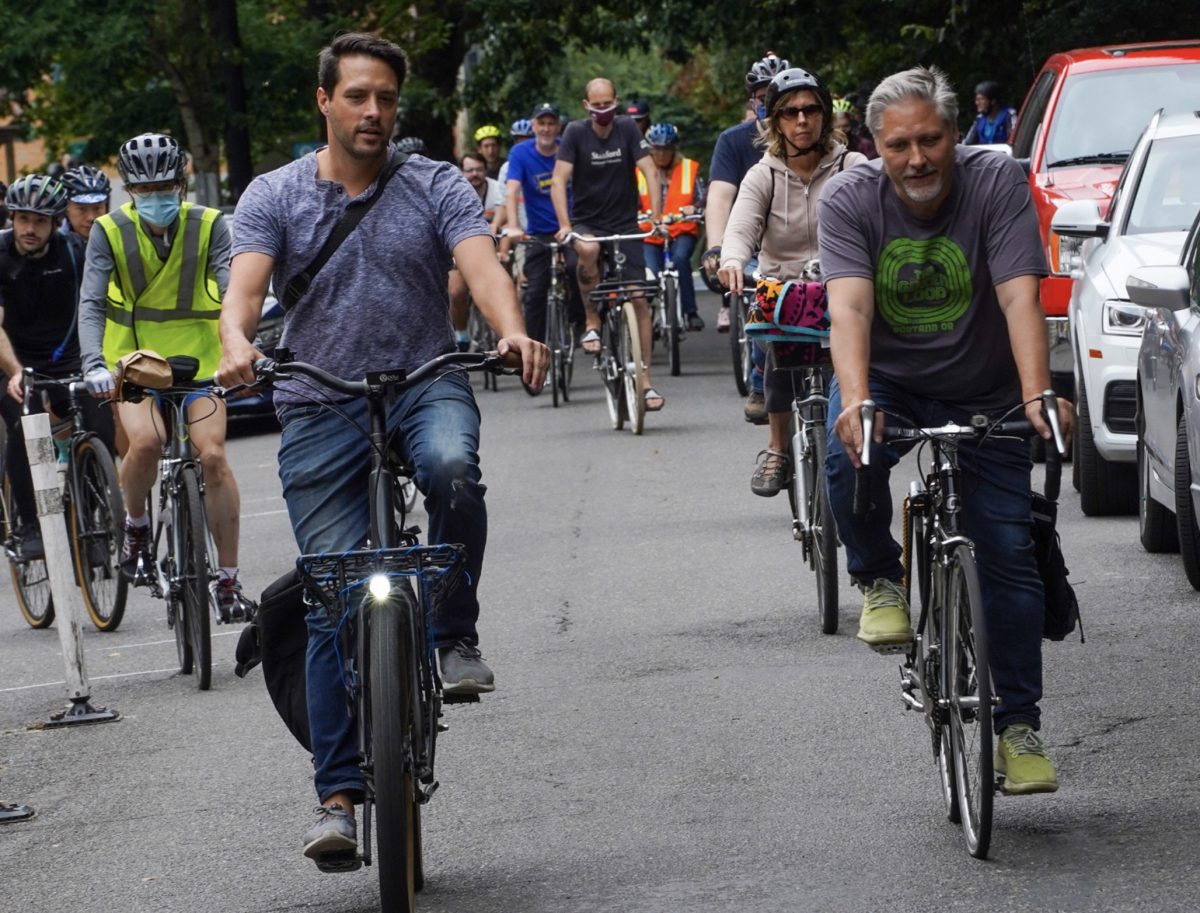
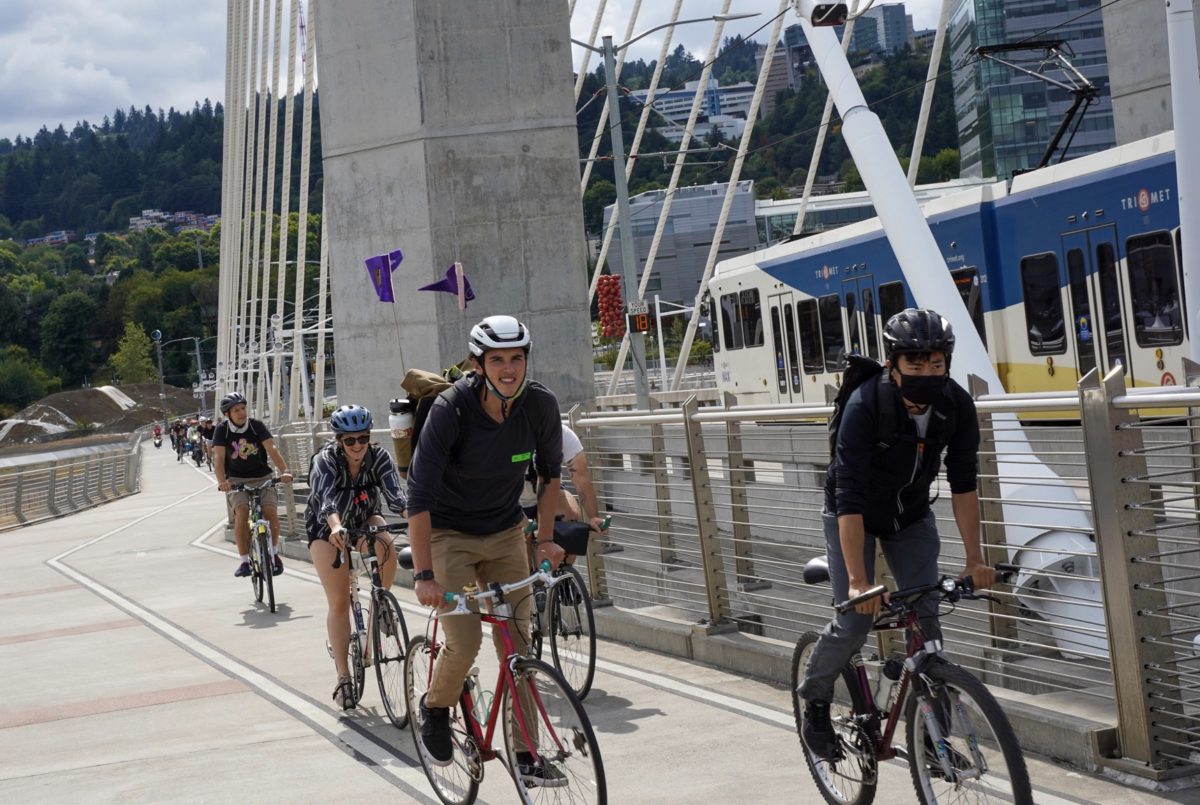

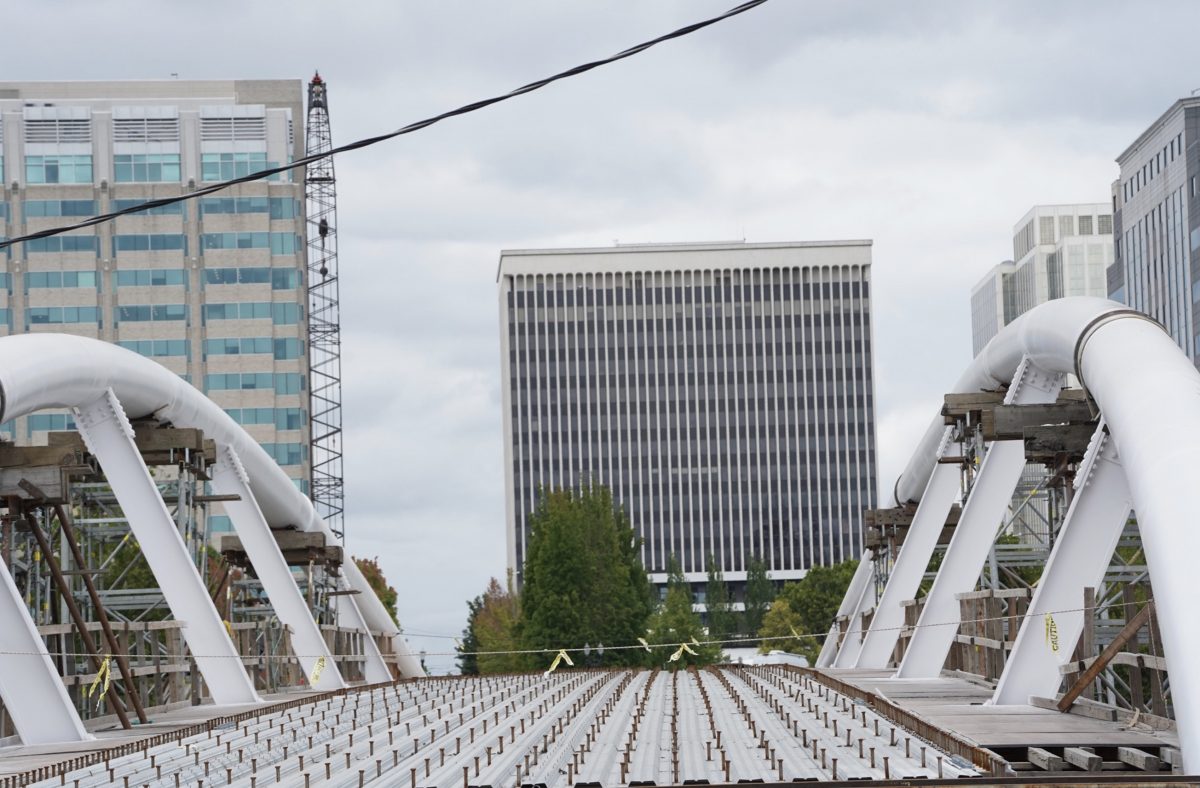
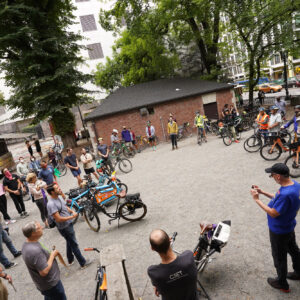
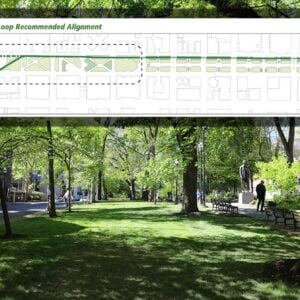
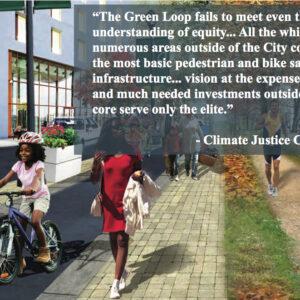
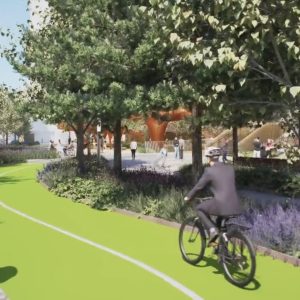
Thanks for reading.
BikePortland has served this community with independent community journalism since 2005. We rely on subscriptions from readers like you to survive. Your financial support is vital in keeping this valuable resource alive and well.
Please subscribe today to strengthen and expand our work.
Portland is luckly to still attract visionary folks like Keith. The Green Loop can bring Portland together, make our government work better, and create a place that inspires Portlanders to see their city not as something to get to one end to the other as fast as possible, but as a place where we can work together to make our shared lives better. We all owe a debt of gratitude to Keith for keeping the dream alive.
Hopefully, a smart elected official will see the potential of this project and throw some money towards it. Certainly a lot cheaper then a $1.8 billion freeway widening project…
Since the Green Loop is crossing the Broadway Bridge, it would much safer, more efficient and more intuitive if protected one-way bike lanes were added on Broadway and Weidler. A two-way cycle-track on one side of a couplet will only work well for the people biking in the direction of the traffic. People riding contraflow will be vulnerable at each intersection when people pulling out are predominately looking for oncoming traffic. Also, riding in the dark is very uncomfortable riding against so many bright lights. For the CEID, I like the idea of putting a 2-way bike route down 6th on half the street, and making the other half alternating one-way street form people driving.
Where is the funding stream for the renovations to Ankeny Square coming from? Is there some fee to the city from the carts there? I wonder how that fee compares to the typical leasing cost of a private food cart pod if so. I hope that there are plans to have some additional money from the city go into those renovations as well and the burden isn’t entirely on the carts to pay.
The way the Green Loop is envisioned, it looks really promising. It will be a great and costly addition to the “commons”. Mr Jones is more optimistic about sharing the loop with urban campers than I am. Along every Portland trail and in much of downtown, they trash the commons. I have little faith that loop adjacent house-less will be of a different ilk.
Grandpa, I Agree. I’m all for bike infrastructure but it’s almost becoming too dangerous to ride in this town. What is that going to do to our carbon footprint?
So you don’t think it’s the developers, car drivers, highway engineers, corporate politicians who make it hard to get around safely? Instead you’re blaming the poor people sleeping outdoors?
I see a real opportunity to use the east side OMSI lot as a bike freight hub. OMSI has enough public transit infrastructure that they should “forgo” one lot for cyclists. Since that’s the mega through bottleneck for high speed riders as well. The cycle freight hub could pull together a lot of loose strands down there, add extra activity to the area late into the night with all day deliveries missing day time traffic peaks. Plan for congestion pricing means having central city hub spaces for transfer zones. OMSI is it. This is how to discourage houseless activity; make it so busy with late night just in time deliveries on the green loop. We shall call it the $$Green Money Loop of Cyclists. This is the only project in Portland that gives me hope.
Somebody please run against Christine Lewis. She didn’t get the memo: we can’t upgrade 82nd cuz you keep telling ODOT to spend it on freeways. Why does BP keep giving softball interviews to these double speak talk ladies ? There’s a reason why we can’t get a vote on the bike bill. TOO SOFT!!!
Yes I regret not asking her about the freeway vote. My bad. I didn’t even expect to see her and then it was a very hasty decision to even chat with her. And maybe I was softened up because her baby was so stinking cute, I was impressed that she was out there, and it was such an informal setting. It was only after I left that I realized I missed an opportunity to ask her about her stance on freeways. I will have another chance to talk with her so stay tuned.